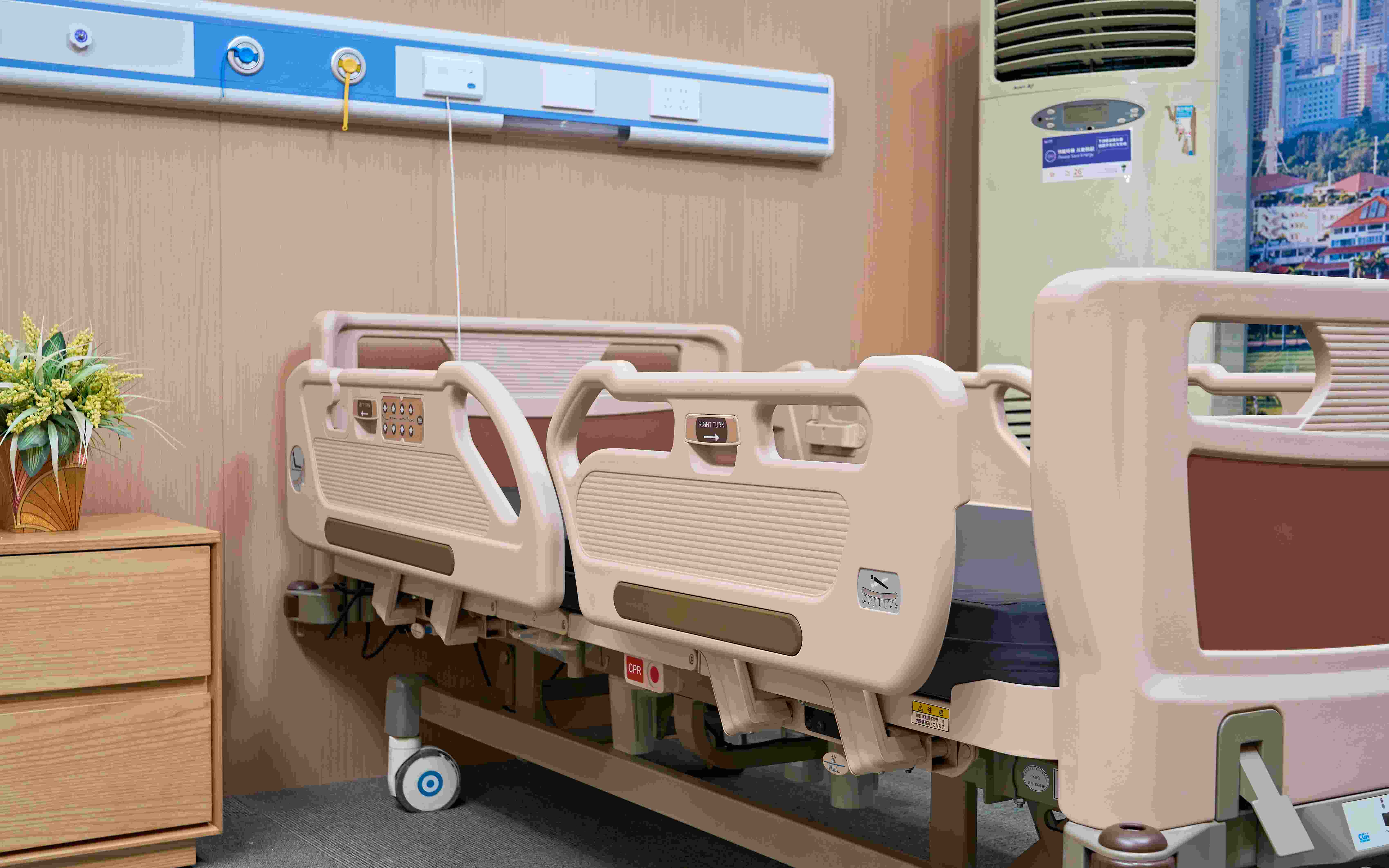With the continuous advancement of medical informatization and nursing automation, smart hospital beds, as the "cornerstone" products for the construction of smart wards, are gradually entering the procurement lists of hospitals at all levels. It can not only monitor the patient's condition in real time and reduce the burden on nurses, but also achieve more efficient diagnosis and treatment management through data linkage. So, are smart hospital beds really worth investing in?
1. Advantages of smart hospital beds
a. Improved efficiency: saving 30% of nursing time
Traditional beds require nurses to manually adjust the angle and record vital signs, while smart beds can automatically complete:
One-button position adjustment: reduce manual operations of turning over and lifting, and reduce the risk of lumbar strain for nurses.
Real-time monitoring: integrated heart rate, blood oxygen, breathing and other sensors, data directly synchronized with electronic medical records.
Bed leave alarm: reduce the risk of falling, especially suitable for elderly and postoperative patients.
Case: After a tertiary hospital in Beijing introduced smart beds, nurses' daily rounds time was reduced by 2 hours, and patient satisfaction increased by 22%.
b. From "passive treatment" to "active participation"
Touch screen control: patients can adjust the backrest angle and lighting brightness independently to enhance the sense of control.
Entertainment and interconnection: built-in tablet supports video visits and film and television playback to relieve anxiety.
Health education: the screen pushes medication reminders and rehabilitation guidance to improve compliance.
Case: A survey of a private hospital in Shanghai showed that the anxiety index of patients using smart beds was reduced by 40%.
2. Disadvantages of smart beds
a. High cost and high procurement threshold
The price of a smart bed is often 3 to 5 times that of an ordinary bed. For small and medium-sized hospitals or grassroots medical institutions, large-scale procurement may create financial pressure.
b .Relying on information technology foundation, the landing threshold is not low
Smart beds need to be seamlessly connected with the hospital information system. If the hospital has not yet achieved system integration, it is difficult for the intelligent function to be effective and it is easy to become a "high-priced ordinary bed".

3. High maintenance requirements
There are many components such as sensors, lines, and control modules. If there is a lack of professional maintenance and operation training during use, it is easy to fail or be used improperly, which will affect the efficiency of nursing.
In general, we recommend that hospitals consider the following questions before making a decision on whether to invest: Does your hospital have a certain information technology foundation? Is there a shortage of nursing staff or management bottlenecks in critically ill areas? Do you plan to build special wards, VIP wards or smart ward pilots?
If the answer is "yes", then the investment in smart hospital beds will be a high-value and sustainable construction direction. If the current conditions are not yet mature, it may be a good idea to start with individual wards or pilot wards and gradually upgrade them in a systematic manner.